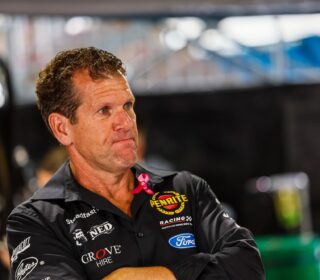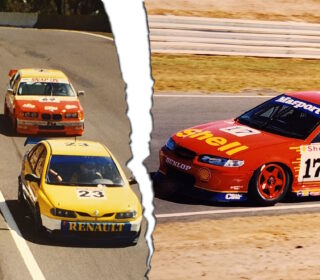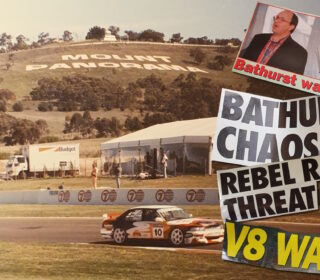A Friday the 13th never to be forgotten
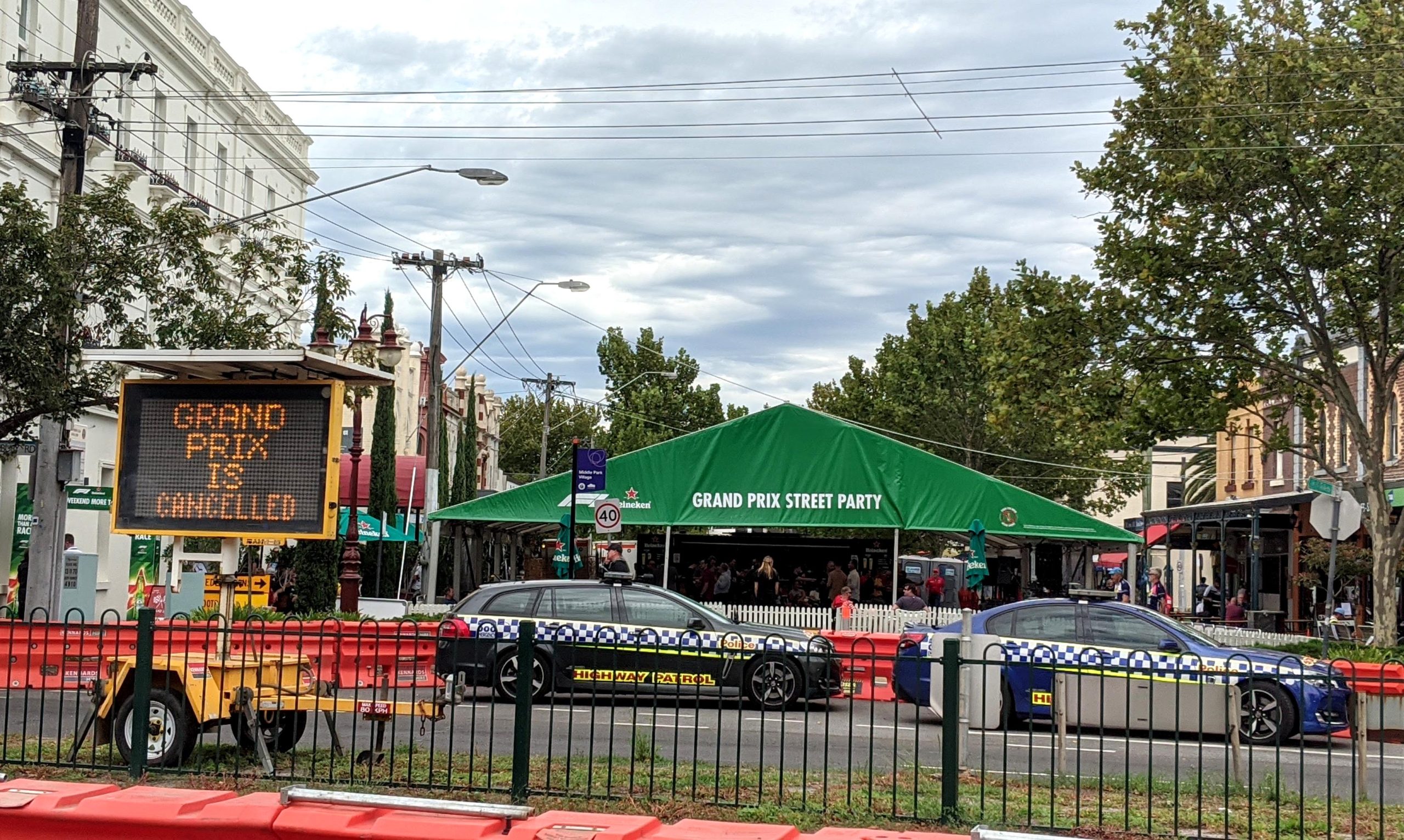
FOR just a few minutes, all was right in the world.
The strong nor-westerly that teased the trees on Albert Park drive, swirling dropped leaves and random bits of detritus, was silenced by an assault on the senses that only this kind of morning and a few special days each March could provide.
Beneath the canopy of trees and on cool, greasy bitumen, here was a Formula One car dancing on something approaching the limit. Perhaps not the limit, the one drivers find during their one special qualy lap to grab pole, but a limit non the less.
The wail of a Cosworth V10 was both tuneful song and shattering racket at the same time – Melbourne’s morning dawn hustle broken by the sound of ten trumpeting elephants singing their sonorous eight-hundred horsepower melody that echoed and reverberated off the buildings across Albert Road before bouncing back towards the lake.
Sure, it might not have been a current-spec, all-the-downforce-in-the-world modern-marvel of a Formula One car. And sure, it carried an extra load in the form of a passenger.
But this was still a Formula One car doing Formula One things on a Formula One track. As it should be.
As Will Davison skillfully piloted the Minardi two-seater out of turn five, the rising pitch of the Cosworth faltered for a moment as he played with the available grip thanks to a brush with the exit kerb – a slight hesitation as he exited the fast right-hand sweeper before accelerating without hesitation beyond view towards six, where the bang-bang-bang of sequential downshifts added some percussion to the mix.
This all remains vivid in the mind because it was, despite the noise, a rare moment of quiet contemplation – and the joy of watching cool racing cars do cool things – to emerge from a day that would turn from extraordinary to plain surreal in just a few short hours.
It was just past 7:35am on Friday, March 13, 2020.
A day, to borrow a line from a former President heading into a different kind of war, that would live in infamy.
The two-seater providing its usual morning Melbourne wake-up call gave a false sense of security on that clear, blustery morning; a sense of normality to an event that had already been racked with stories that became more and more remarkable as the event went on.
From the McLaren withdrawal late on Thursday, to Italian travel bans, PA announcements about social distancing and hand sanitiser to the ongoing and building speculation that the whole shooting match would be stopped, the rumor mill worked overtime.
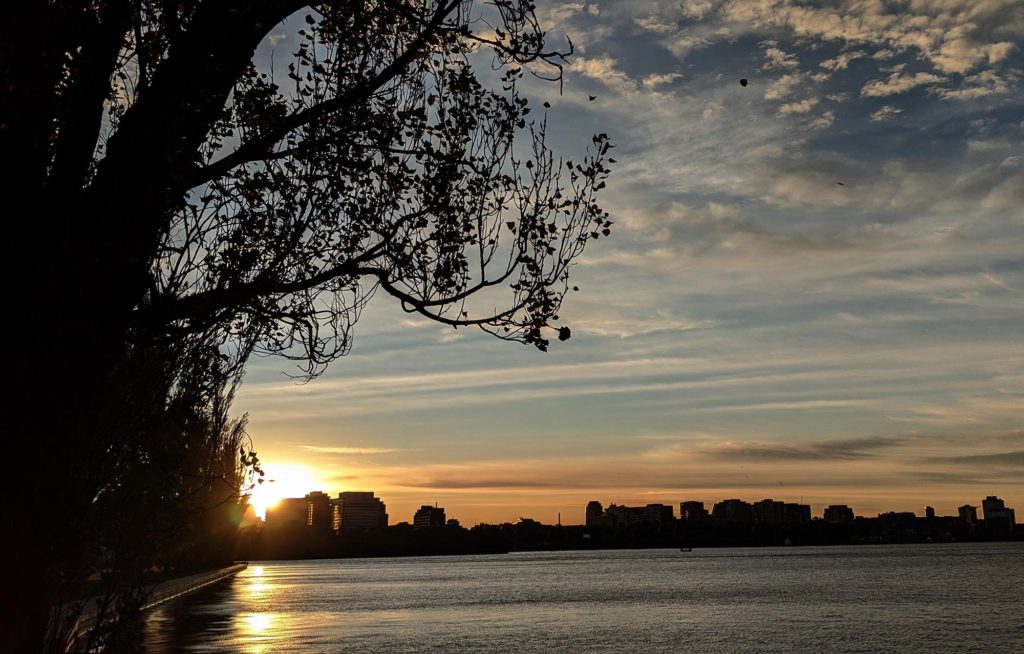
That the two-seater still ran Friday morning, giving a few corporates their lucky few moments of glory, shows how late things were pushed in ultimately making a decision that would basically push pause on the entire sport for three months.
I worked out of the Porsche race truck that morning and in the space of two hours the story we were being told changed four or five times, if not more: The event would run without McLaren. The event would run without F1. The event would run without spectators but with local supports, like Supercars and Porsche, still racing. The event would run for Friday only and then stop.
Finally, at about 10am, about half an hour before the rest of the world knew and the lines of people waiting outside the many gates around Albert Park were told the news, word came down from on high:
“Pack up. It’s over.”
Few things have been more surreal in my life than watching teams pushing their cars back into transporters at the same time they were due to be on the track for the second race of the weekend.
Or watching the adjacent vendors packing up merchandise tents well before lunch on day two of a four-day event when they should have been selling overpriced T-Shirts by the trailer load.
Or weighing up the costs of staying in Melbourne for a few more days to see out an expensive and paid-for Hotel booking, or jagging a flight home that evening just to get out of dodge.
Nearby, a few optimistic spectators, denied their racing fix, settled into a fix of a different kind: a quiet gathering with some amber beverages beneath a Heineken tent set up for the Grand Prix Street Party – though it was more a wake.
I vividly remember conversations with team owners, mechanics and drivers alike, each of them with a slightly dazed sense of ‘is this actually happening?’. Even today, 365 days on and having lived the fallout like everyone else, it still doesn’t quite seem like something real.
It’s more like remembering an episode of a TV series or a movie. It’s in your mind – but you know it couldn’t possibly have happened in real life.
No one knew at the time that the entire world – and not just the unique, enclosed motorsport one in which we all tend to exist – would come crashing to a grinding, agonizing, painful, terrible and for some, tragic, halt in the coming days, weeks, and months.
I walked out of the track at just after midday, making a point to walk through the main spectator area behind the pit straight grandstands and out the main gate of the circuit on to Fitzroy street.
Little did I know that the shuttered stores, empty seats and deserted marquees, so usually full of life on a Grand Prix Friday, would be an eerie precursor of the lockdowns that would soon follow.
On Canterbury Road, as I trudged back to the hotel, a temporary LED sign flashed ‘GRAND PRIX IS CANCELLED’ to absolutely no one at all.
Nearby, a few optimistic spectators, denied their racing fix, settled into a fix of a different kind: a quiet gathering with some amber beverages beneath a Heineken tent set up for the Grand Prix Street Party – though it was more a wake.
The remaining handful of would-be spectators, electing to not drown their sorrows, trudged back to their respective points of origin.
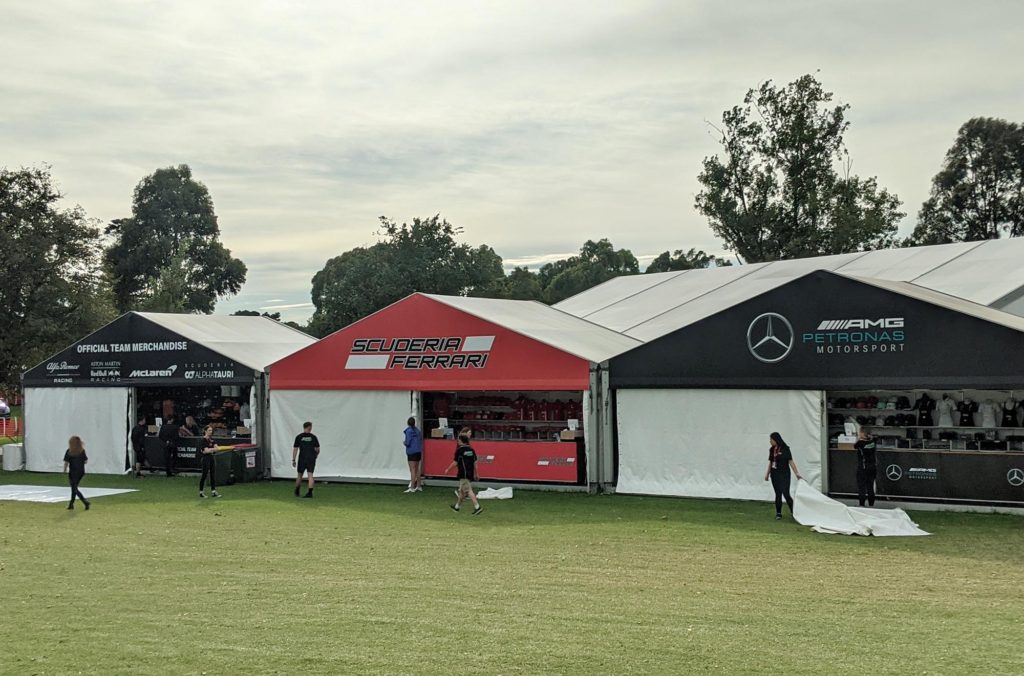
I skipped town that night; in a battle between not particularly wanting to hang around a place that felt so wrong and burning the accommodation cost, the former won. It was worth the financial loss to escape such a strange scenario – Hanging around for an event that wasn’t going to happen didn’t seem right at all – especially for the reasons it was cancelled.
The Qantas flight to Adelaide was half-full of people who had made the same decision.
One, adorned in Brawn F1 gear, which I appreciated, smiled meekly at me as we boarded.
“…Strange day,” he said, after a lengthy pause, as if trying to find the words to sum up an experience we had shared, if indirectly.
“Yeah.. extremely…” was all I could answer.
“Can’t believe it happened on today, either,” he added, as he took his seat a few rows behind me.
“Today?” I replied, quizzical look on my face.
“Yeah… Friday the 13th!” he replied.
I laughed, shaking my head: that moment was the first time I had even picked up on that piece of irony but in the end, it was almost too perfect – in a perfectly terrible kind of way.
Much has changed in the intervening 365 days. The world is a different place and motorsport, too – in many aspects, probably for the better.
But for all the drama in our sport, for all the heartache, the politics and the stress it can cause, I hope to whatever deity there is that we never have to live through another Friday, March 13 2020.
Usually, the memorable days at a track are the ones with incredible races, great people and the colour, excitement and energy only our sport can provide.
The most memorable day of my racing career featured just one car, providing a few glorious moments of joy on a day that offered the exact opposite.
Friday the 13th, 2020.
Memorable, indeed.



